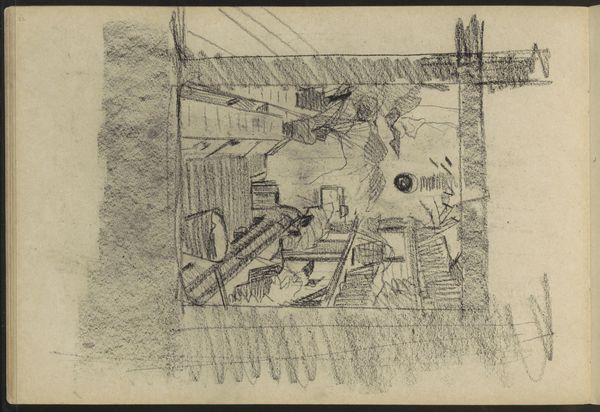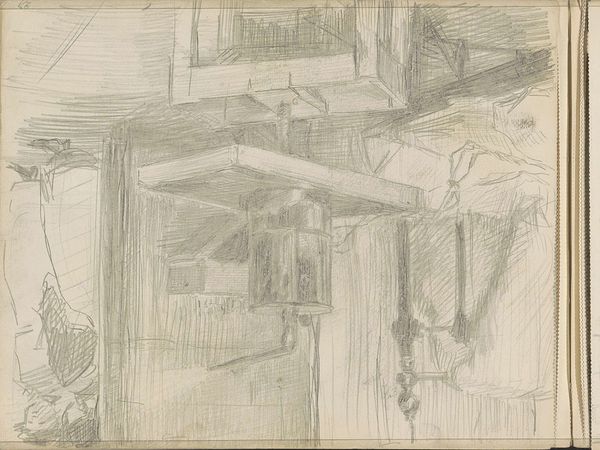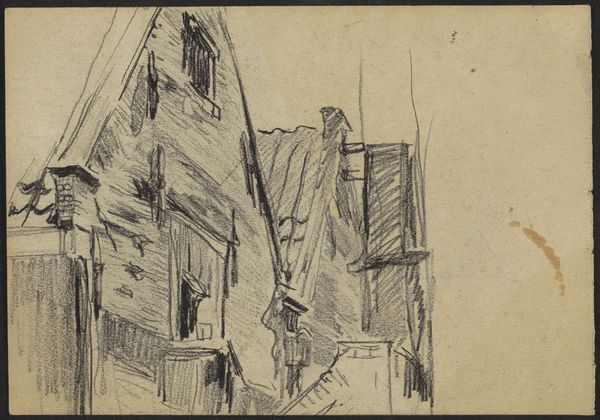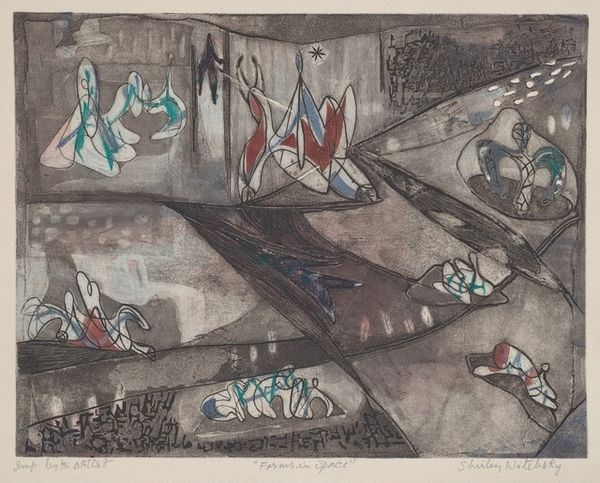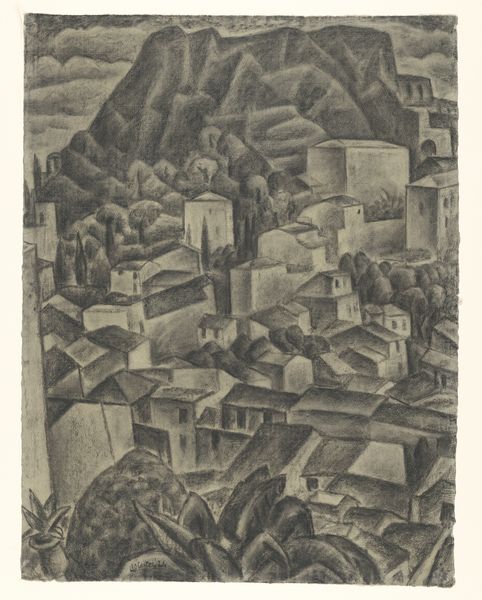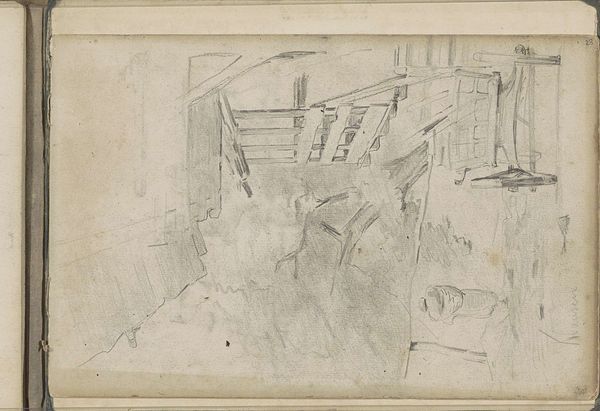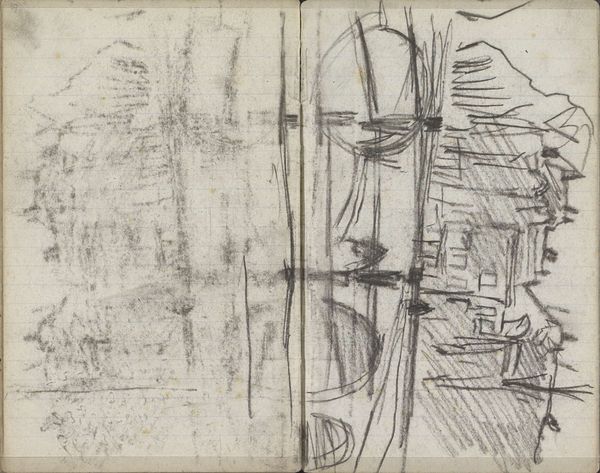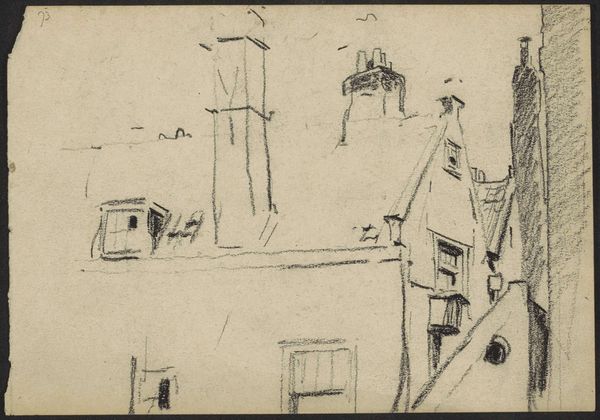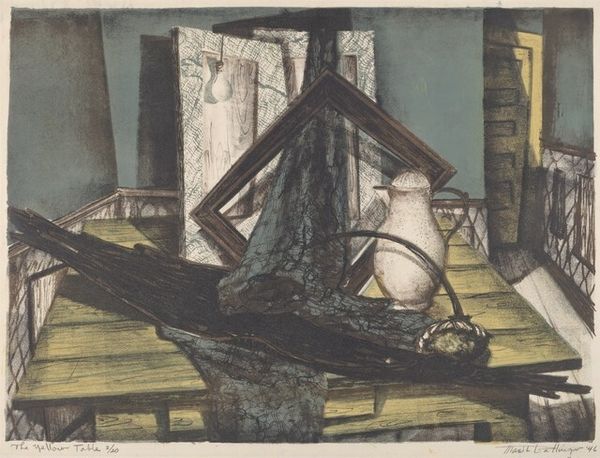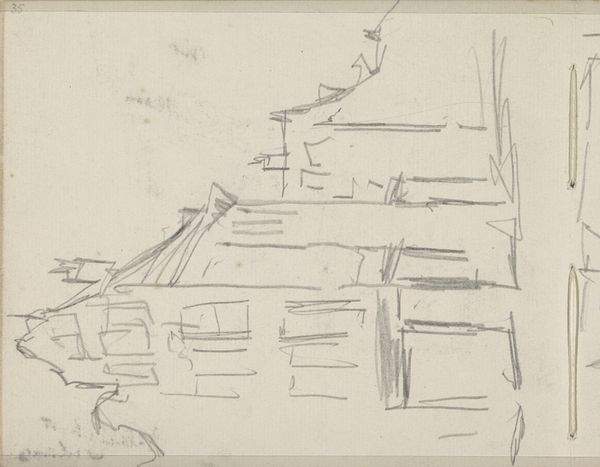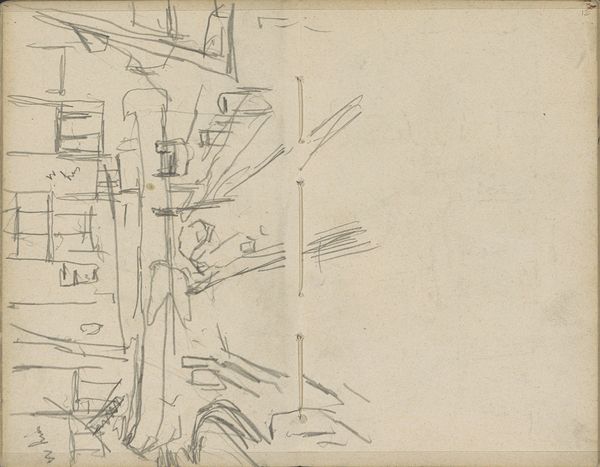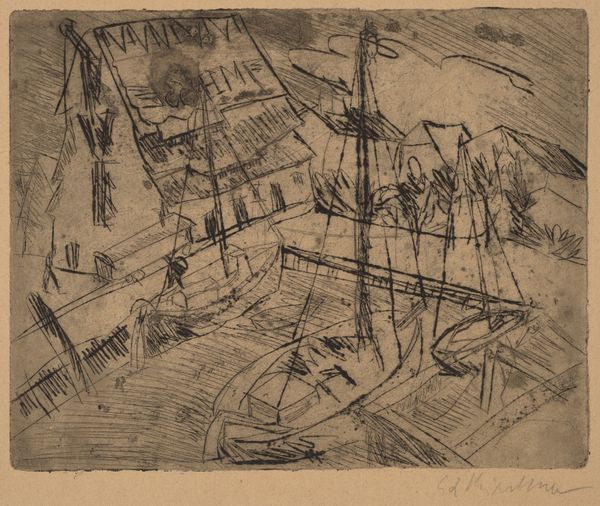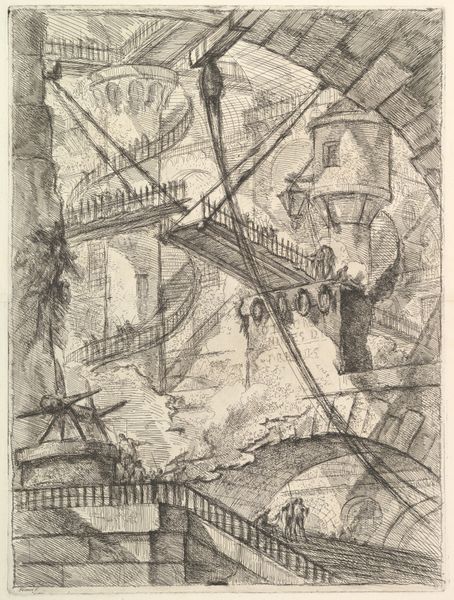
drawing, coloured-pencil, paper, chalk, architecture
#
drawing
#
cubism
#
coloured-pencil
#
landscape
#
paper
#
coloured pencil
#
chalk
#
architecture
Copyright: Public Domain
Pauline Kowarzik made this drawing of the I. G. Farben building site with graphite and colored pencil. It offers a look into the complex social and political landscape of Germany, most likely sometime in the 1920s. The drawing depicts laborers at work amid a jumble of raw materials, scaffolding, and machinery. It begs the question: what was the cultural context in which this image of labor was created? Germany in the Weimar Republic was marked by rapid industrialization, economic instability, and intense political polarization. Institutions like the Bauhaus were attempting to redefine the relationship between art, industry, and society. Kowarzik's drawing seems to capture that moment, a moment where the human cost of progress was becoming a concern. By studying the economic and social history of the Weimar Republic, and the institutional history of German art, we can start to understand the cultural significance of this drawing. After all, art derives its meaning from context.
Comments
No comments
Be the first to comment and join the conversation on the ultimate creative platform.
